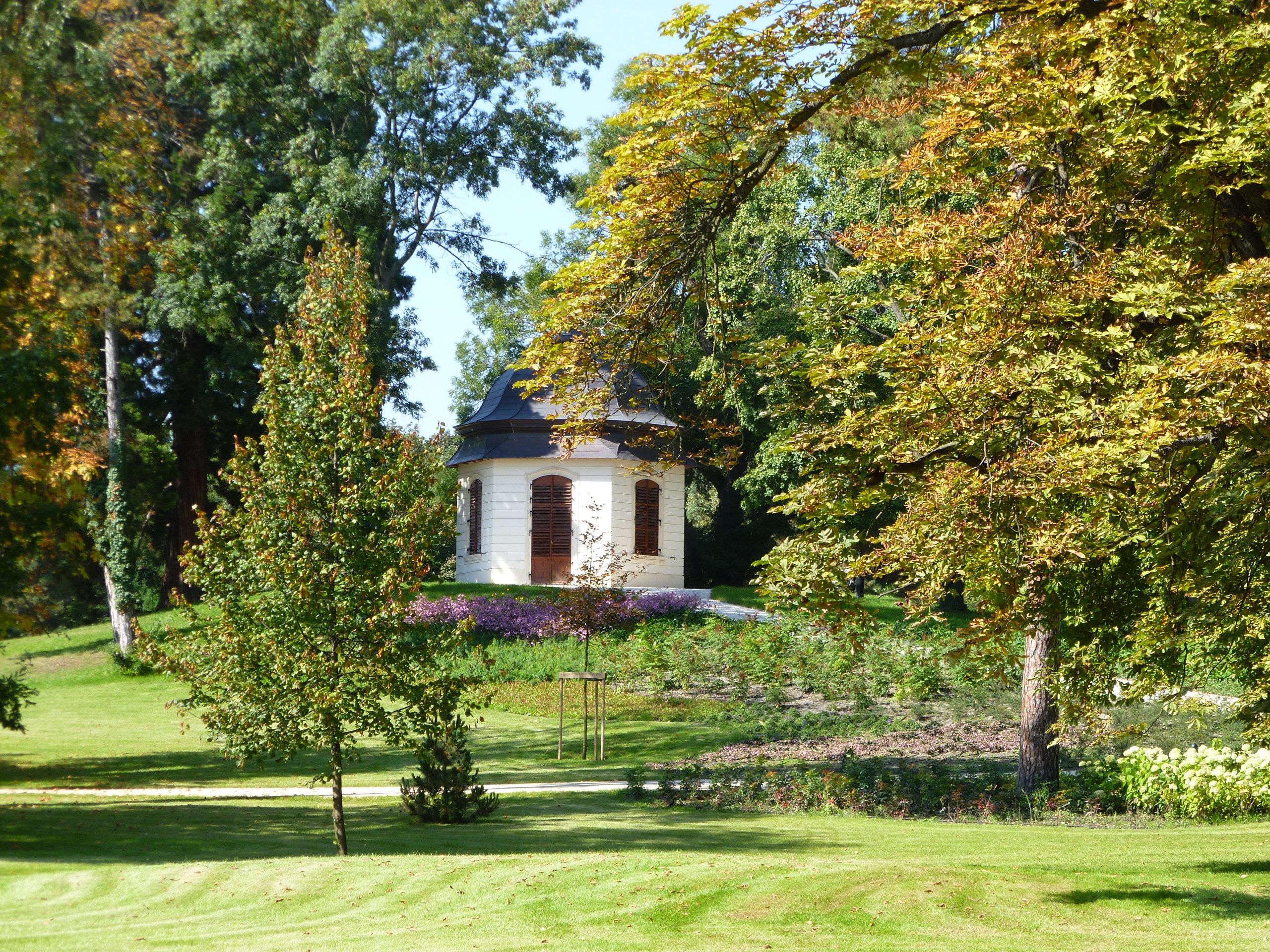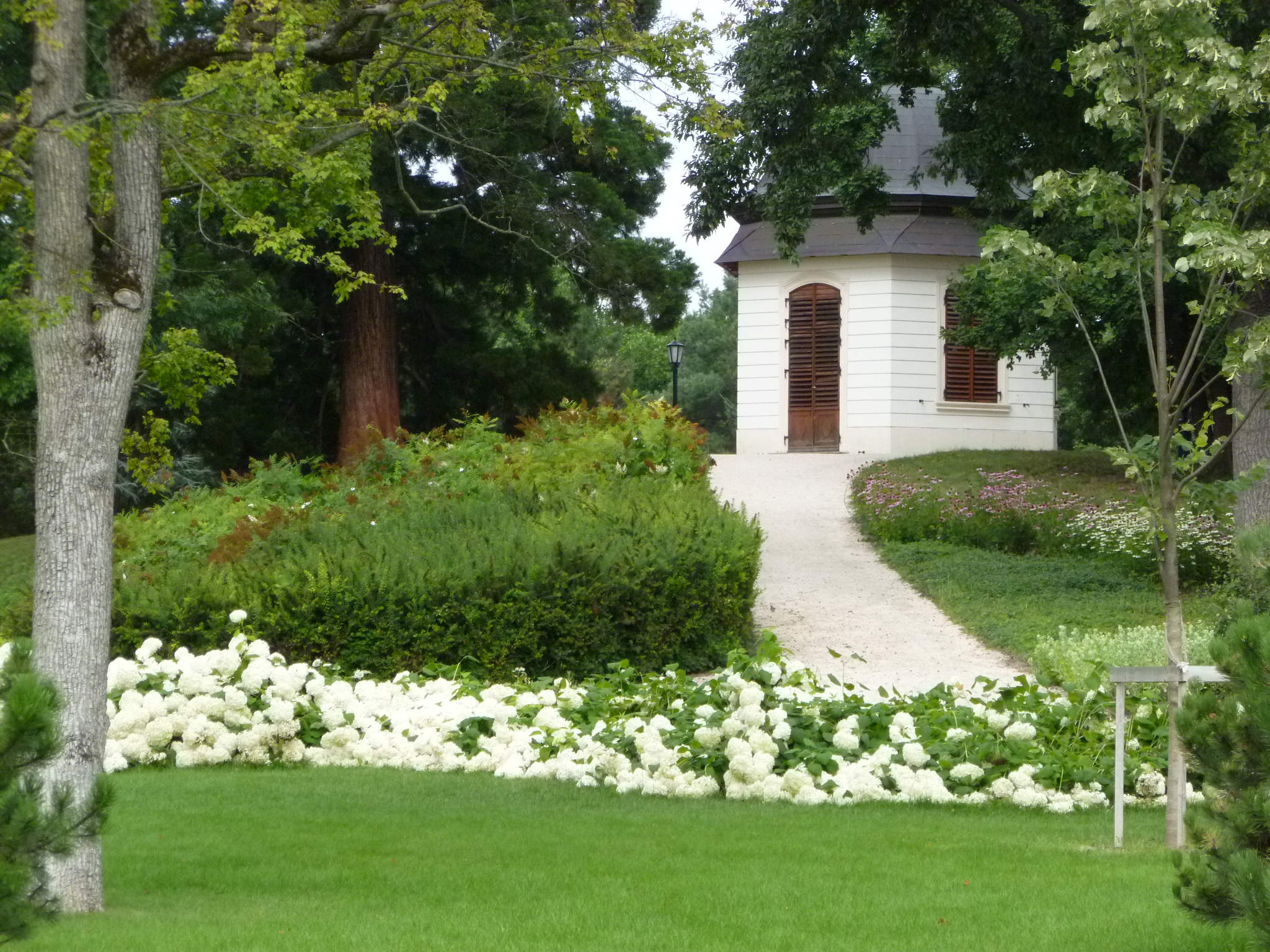
Located around 200 metres from the Palace, the Kinghill pavilion is the only remaining building in the Palace park which dates from the Baroque period. It was Antal Grassalkovich I who had the hexagonal pavilion built in the 1760s. 54 oil paintings depicting Hungarian leaders and kings were incorporated into the panelled walls of the pavilion. The majority of the pictures have been destroyed or have disappeared and in the 1980s, only the bare walls were left standing. The building was reconstructed in 2002. The set of pictures was re-created by means of advanced photographic technology in 2004, and since then the pavilion may be visited on guided tours.
The only building surviving from the Baroque period in the Palace park is the Kinghill pavilion with the portraits of Hungarian leaders from the time of the Hungarian conquest and those of later Hungarian kings. It was Antal Grassalkovich I who had the hexagonal pavilion built in the 1760s around 200 metres from the palace. Galleries of ancestors and kings would be created in the 17th and 18th centuries as ornamentation for aristocratic residences. On the one hand this was a way of expressing their sense of nobility, and on the other it was a pictorial representation of their attitude to history. A speciality of the series of pictures in Gödöllő is that Grassalkovich erected a separate building for the purpose of evoking the whole of Hungarian history with a near-complete set of former rulers. The pavilion was built on an artificial hill known as Kinghill. (This name has historical significance. It used to be the name of a place where a new king would ride up following his coronation ceremony and swing his sword towards the four winds as a sign of his will to defend the country against attacks coming from any direction.)
The 54 oil paintings depicting the leaders and kings incorporated into the panelled walls of the pavilion all share a common frame structure of laurel wreaths and phylacteries. The phylactery displays the name of the portrait’s subject in Latin, his number in the line of rulers and the dates of his reign. Rulers of greater significance have larger portraits and have been placed in special positions over the doors and the windows. The line starts with Attila’s portrait over the northern entrance. He is followed by Keve underneath him and then the portraits follow one after the other in a clockwise manner. (After a full turn, the lines of pictures continue spirally downwards, always taking one step down after each turn under the starting picture.)
Some of the pictures were damaged during the War of Independence in 1848–49. Baron Simon Sina, the new owner of the palace, had the pavilion renovated in 1857 in preparation for Francis Joseph I’s visit to Gödöllő. He had copies of the damaged pictures painted and also added to the collection portraits of the rulers from the century that had passed since the initial construction of the pavilion.
At the beginning of the royal period in 1867, the pavilion existed in this state and it could be visited by the public. However, following Queen Elisabeth's death in 1898, the portraits were transferred to the Royal Castle in Buda. Later on, fourten of them became property of the Hungarian National Museum but the wherebouts of the rest is still unknown. The building was reconstructed in 2002. The set of pictures has been recreated, by means of advanced photo technology. Engravings plus coloured and enlarged pictures based on other depictions have been placed next to the copies of the surviwing paintings. The Kinghill pavilion was reopened in December 2004.



